
Thursday, March 14th, 2024
The Black Influence on "Modern Paris"
Cover image: Josephine Baker Veiled (detail) by Jean Dunand
© Entrée to Black Paris
As stated in a previous Entrée to Black Paris blog post, the Petit Palais is wrapping up a three-part exhibition series with a show called Modern Paris (1905-1925).
Tom and I went to see the exhibition last week and felt it was definitely worth the visit.
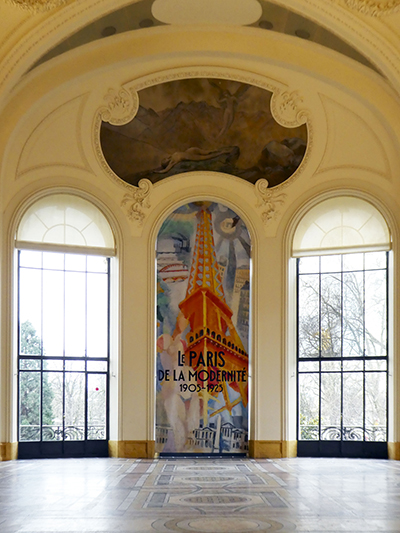 Exhibition banner
Exhibition banner
© Entrée to Black Paris
Entries are timed, and the museum advises that you reserve your tickets in advance.
We entered at 12:15 PM on Sunday, March 10. While Tom had to leave early, I didn't exit the museum until almost 4 PM!
The exhibition covers twenty years of vibrant activity in the visual arts, fashion, industry, and decorative arts.
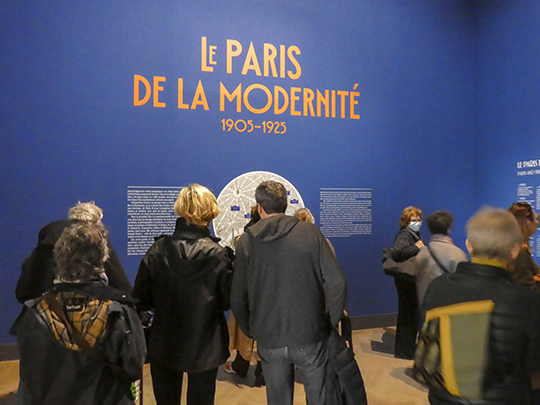 First room of exhibition
First room of exhibition
© Entrée to Black Paris
Visitors are immediately made aware of the "Black influence" during this period through the presentation of two works by Marie Vassilieff and a female statuette from Côte d'Ivoire.
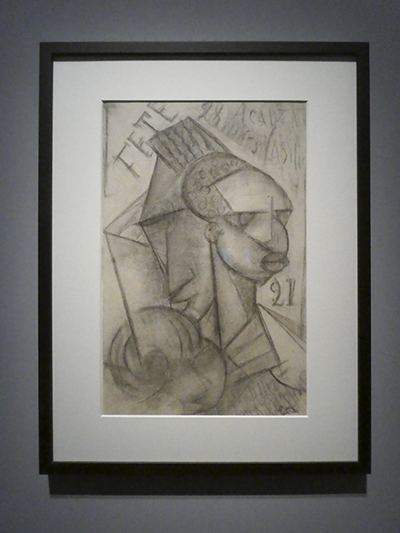 Sketch for a Poster for a Ball at the Academy Vassilieff
Sketch for a Poster for a Ball at the Academy Vassilieff
Marie Vassilieff
c.1913-1914 Charcoal on Paper
Photo © Entrée to Black Paris
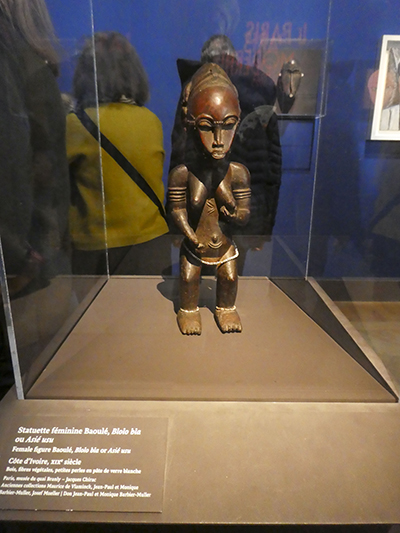
Female figure Baoulé, Blo bla or Arié una
19th century; Côte d'Ivoire
Wood, plant fibers, glass pearls
© Entrée to Black Paris
Amadeo Modigliani used Gouro masks from Côte d'Ivoire as inspiration to create a magnificent stone sculpture called Head of a Woman.
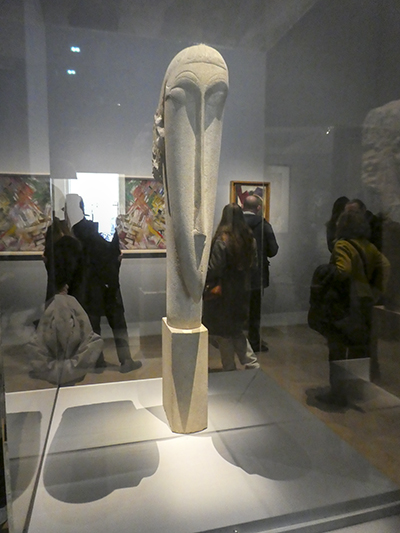 Head of a Woman
Head of a Woman
Amadeo Modigliani
1911-1912 Stone
© Entrée to Black Paris
An installation shows Ivoirian masks on the reproduction of a wall in Picasso's bedroom at the apartment he shared with Olga Khokhlova on rue la Boétie in the 8th arrondissement.
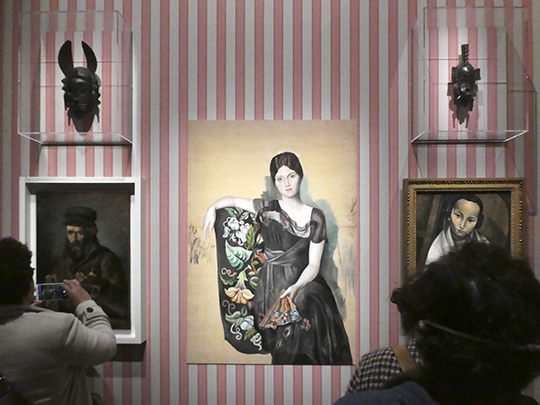
The exhibition does not neglect the First World War. It presents the cessation and gradual reemergence of artistic activity during the conflict.
As an example, visitors learn that the first exhibition of African sculptures as art as opposed to ethnic or archaeological objects was held in November 1916.
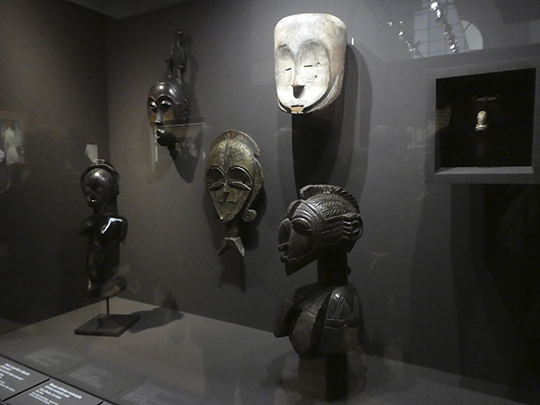 African sculptures
African sculptures
© Entrée to Black Paris
You will find a sensitive artistic representation of African soldiers who fought for the French during the war.
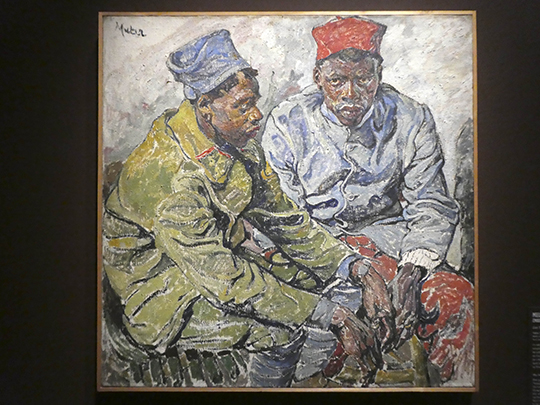 The Sudanese
The Sudanese
Meta Muter
c.1917 Oil on canvas
Photo © Entrée to Black Paris
Tarsila do Amaral, a female Brazilian painter who spent considerable time in Paris beginning in 1920, painted her iconic A Negra here in 1923.
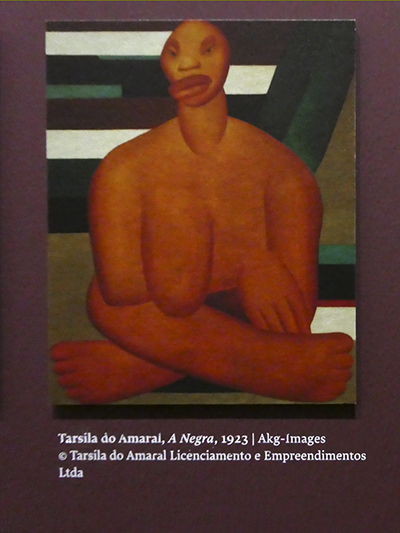 A Negra
A Negra
Tarsila do Amaral
1923, Oil on canvas
Photo © Entrée to Black Paris
Of course, no exhibition that presents the first quarter century of life in Paris would be complete without examining Josephine Baker's influence on the cultural scene.
In Section 10 of the show, Josephine is presented as "The Revelation." An information panel, paintings, drawings, photos, a brief video, and a doll provide a glimpse into the enormous impact she had on French society, beginning at the tender age of nineteen.
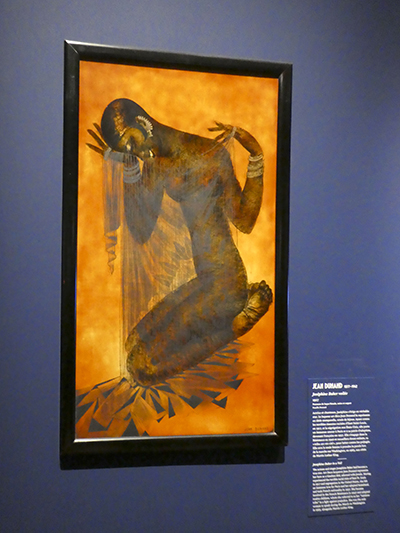 Josephine Baker veiled
Josephine Baker veiled
Jean Dunand
1927; Blond, black, and silver lacquer
Photo © Entrée to Black Paris
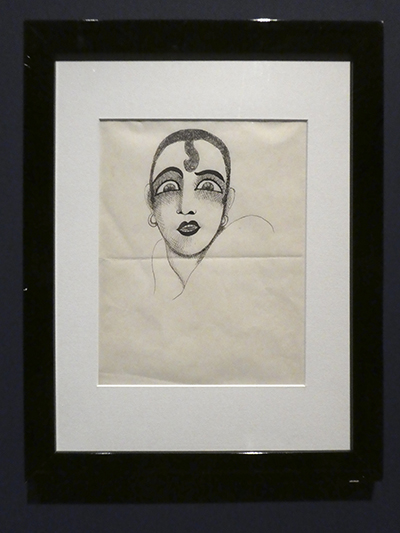
Josephine Baker
Jean Cocteau
1925; China ink on paper
Photo © Entrée to Black Paris
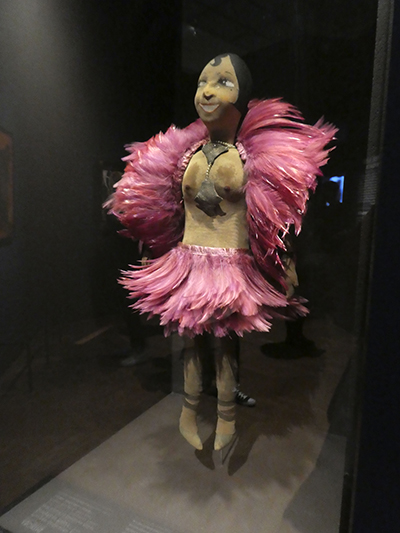 Doll dedicated by Josephine Baker
Doll dedicated by Josephine Baker
© Entrée to Black Paris
In conjunction with the exhibition, the Petit Palais has organized a free, full-day colloquium on Josephine on Friday, March 15. To register, click HERE.

 Our Walk: Black History in and around the Luxembourg Garden - Click here to book!
Our Walk: Black History in and around the Luxembourg Garden - Click here to book!